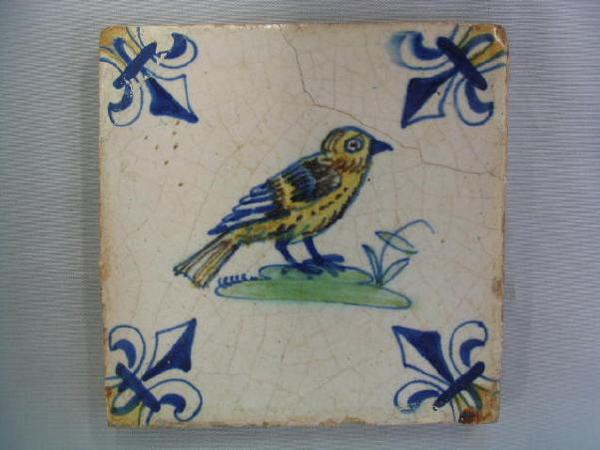Dutch earthenware tile
Accession Number NWHCM : 1998.64.101
Description
Square tin glazed earthenware tile decorated in underglaze blue and polychrome; picture of a yellowhammer-type bird in the centre of the tile; painted in blue, yellow and brown; standing on a green patch of grass; fleur-de-lys corners in underglaze blue and yellow.
Read MoreDutch earthenware tile
This is a typical Dutch tile of the first half of the seventeenth century. The designs are usually simple and quite naïve in nature, although are always charming and attractive, showing vignettes of everyday life and biblical scenes as well as floral, animal and bird motifs. They were very often only painted in underglaze cobalt blue, but designs sometimes included other colours, as here. The opaque white surface to the earthenware is achieved by glazing with lead mixed with tin oxide. This technique originated in the Middle East around the ninth century CE to imitate Chinese porcelain and was later copied by European potters. However, it is easy to distinguish from porcelain as the glaze is brittle and prone to cracks and flaking.
This tin-glazed earthenware has become known as 'delftware' in Europe because the town of Delft was a major centre of the pottery industry from the beginning of the seventeenth century. The blue and white ware became very popular and similar wares were also made throughout Europe from the seventeenth century onwards.






